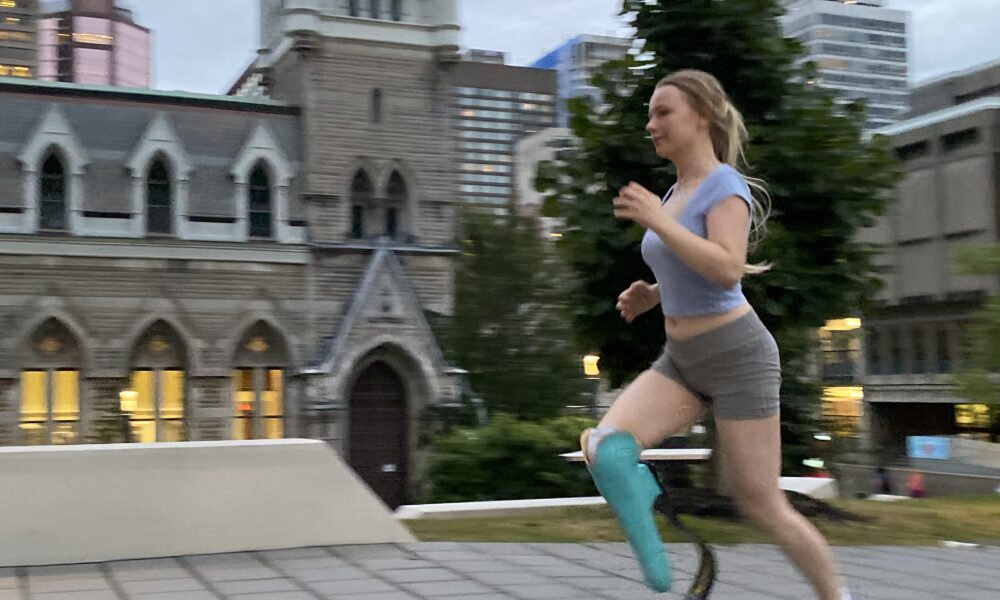This summer’s Olympic and Paralympic season abounded with incredible feats of athleticism. As a disabled journalist, I was pleased to see Paralympic athletes garner significant media coverage across Canadian news outlets. But while some media agencies got disability coverage right, others perpetuated harmful stereotypes, framing disabilities as obstacles to be overcome.
Although I never deliberately try to hide the fact that I’m an amputee in my everyday life, it’s fairly easy for me to do so. My below-the-knee prosthesis is slim, coloured to my skin tone, and easily concealed under pants. Whenever I go running, however, my amputation is on full display. The shape of my running prosthesis—a slim socket attached to a curved running blade—makes it impossible to hide. While running, strangers not only keep their eyes trained on me, but frequently come up to me to ask invasive questions and praise my courage, charisma, and resilience. I am routinely subjected to an uncomfortable excess of attention. Although strangers generally mean well, their celebration of my character is misguided; after all, they don’t know me.
Despite rarely explicitly mentioning my amputation, it’s clear that these individuals praise my running because they see my amputation as a barrier I have to surmount. Of course, it is harder to run as an amputee. Not only is it something I had to re-learn how to do after my amputation, but it’s more painful for me to run than for many of my able-bodied peers. Friction between my leg and running prosthesis creates skin irritation, and running with the prosthesis itself often leads to pain at the bottom of my stump and lower back. Moreover, it can be difficult to find accessible routes amidst Montréal’s worn-down and often uneven sidewalks. Still, my running is more ordinary than it is inspirational. Framing my amputation as an obstacle places me in opposition to a fundamental part of who I am, an aspect of my everyday life. My amputation is something I work with, not something I work against.
Journalists often make the same mistake of portraying disabilities as obstacles. Of course, my sweaty, tomato-faced runs around my Montréal neighbourhood are hardly comparable to the athletic performances seen at the Paralympic level. Unlike my ordinary runs, Paralympic athletic achievement is inspirational. Nevertheless, media coverage of the Paralympics often portrays disabled athletes’ victories as being achieved in spite of their disabilities. Presenting disabilities as obstacles only perpetuates the cultural narrative that disabled people need to be cured—that we are not welcome to exist in this world as we are.
Disabled athletes not only deserve greater visibility, but more persistent coverage year-round. Although the 2024 Paris Paralympic Games were the first in history to receive some coverage of all 22 sports played, writing about disabled athletes only once every Paralympic season falls short of consistent representation. Similarly, news agencies overwhelmingly favour coverage of man athletes, and must also work to rectify the unequal representation of woman athletes in sports journalism.
We have a responsibility as journalists to lead by example. Media coverage shapes our values and worldview, and how the media represents disabled people inevitably influences how individuals interact with disabled people in the world. When we are simply going about our ordinary lives, we deserve to be represented as just that—ordinary—rather than as reductive objects of inspiration or feel-good stories for able-bodied audiences. As journalists, we should strive to let disabled people tell their own stories, rather than force stereotypical narratives onto them. By asking questions rather than making assumptions, we can more authentically represent disabled people’s stories. Ultimately, our responsibility as journalists to inform the public is rooted in an even greater responsibility: To truly listen.







